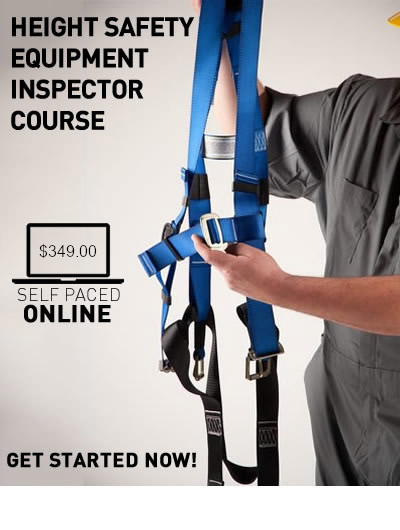No region selected
Tower Climbing & Rescue Training
ICTTCR203 - Use safe rigging practices to climb and perform rescues on telecommunications network structures
Face to Face
Climbing and rescue training for anyone required to work on structure such as telecommunications towers, poles, chairlifts or other tower-like structures.
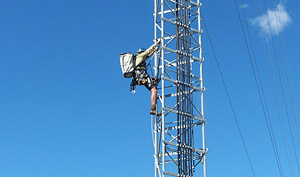
Course Dates
| Location (VIC) | Start Date | Places Left |
|---|---|---|
| Melbourne - Port Melbourne (Cook St) | Thu, May 02, 2024 (7:30am) |
5 Places Left
Book Now |
| Melbourne - Port Melbourne (Cook St) | Thu, May 09, 2024 (7:30am) |
1 Place Left
Book Now |
| Melbourne - Port Melbourne (Cook St) | Thu, May 16, 2024 (7:30am) |
Places Available
Book Now |
| Melbourne - Port Melbourne (Cook St) | Thu, May 23, 2024 (7:30am) |
Places Available
Book Now |
| Melbourne - Port Melbourne (Cook St) | Thu, May 30, 2024 (7:30am) |
Places Available
Book Now |
| Melbourne - Port Melbourne (Cook St) | Thu, Jun 06, 2024 (7:30am) |
Places Available
Book Now |
| Melbourne - Port Melbourne (Cook St) | Thu, Jun 13, 2024 (7:30am) |
Places Available
Book Now |
| Melbourne - Port Melbourne (Cook St) | Thu, Jun 20, 2024 (7:30am) |
Places Available
Book Now |
| Melbourne - Port Melbourne (Cook St) | Thu, Jun 27, 2024 (7:30am) |
Places Available
Book Now |
| Melbourne - Port Melbourne (Cook St) | Thu, Jul 04, 2024 (7:30am) |
Places Available
Book Now |
| Melbourne - Port Melbourne (Cook St) | Thu, Jul 11, 2024 (7:30am) |
Places Available
Book Now |
| Melbourne - Port Melbourne (Cook St) | Thu, Jul 18, 2024 (7:30am) |
Places Available
Book Now |
| Melbourne - Port Melbourne (Cook St) | Thu, Jul 25, 2024 (7:30am) |
Places Available
Book Now |
| Melbourne - Port Melbourne (Cook St) | Thu, Aug 01, 2024 (7:30am) |
Places Available
Book Now |
| Melbourne - Port Melbourne (Cook St) | Thu, Aug 08, 2024 (7:30am) |
Places Available
Book Now |
| Melbourne - Port Melbourne (Cook St) | Thu, Aug 15, 2024 (7:30am) |
Places Available
Book Now |
| Melbourne - Port Melbourne (Cook St) | Thu, Aug 22, 2024 (7:30am) |
Places Available
Book Now |
| Melbourne - Port Melbourne (Cook St) | Thu, Aug 29, 2024 (7:30am) |
Places Available
Book Now |
| Melbourne - Port Melbourne (Cook St) | Thu, Sep 05, 2024 (7:30am) |
Places Available
Book Now |
| Melbourne - Port Melbourne (Cook St) | Thu, Sep 12, 2024 (7:30am) |
Places Available
Book Now |
| Melbourne - Port Melbourne (Cook St) | Thu, Sep 19, 2024 (7:30am) |
Places Available
Book Now |
| Melbourne - Port Melbourne (Cook St) | Wed, Sep 25, 2024 (7:30am) |
Places Available
Book Now |
| Melbourne - Port Melbourne (Cook St) | Thu, Oct 03, 2024 (7:30am) |
Places Available
Book Now |
| Melbourne - Port Melbourne (Cook St) | Thu, Oct 10, 2024 (7:30am) |
Places Available
Book Now |
| Melbourne - Port Melbourne (Cook St) | Thu, Oct 17, 2024 (7:30am) |
Places Available
Book Now |
| Melbourne - Port Melbourne (Cook St) | Thu, Oct 24, 2024 (7:30am) |
Places Available
Book Now |
Course Details
Certification
Students who are deemed competent will receive a Statement of Attainment recognised under the Australian Qualifications Framework. This certification is nationally recognised. The Statement is issued by Pinnacle Safety and Training (RTO 40496).
National units of competency
- RIIWHS204E - Work safely at heights
- ICTTCR203 - Use safe rigging practices to climb and perform rescues on telecommunications network structures
Course Duration
2 days. Allow two 8 hour days.
Price
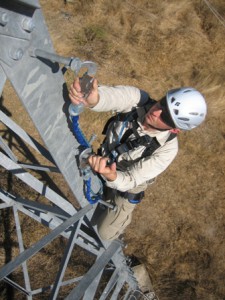
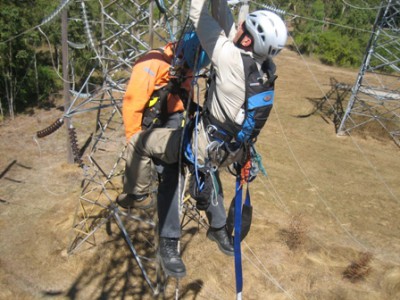
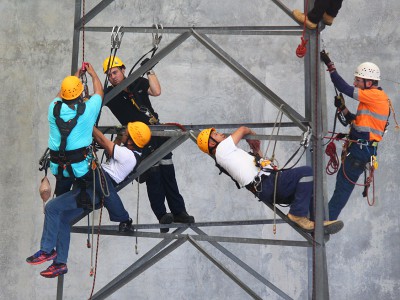
Course Overview
Tower Climbing and Rescue Training is designed to enable trainees to work effectively on towers. Training is focused on:
- Methods of accessing the work position
- Using double hook lanyards
- Using fixed ropes or fixed ladders (on communications towers)
- Mobility at height
- Work positioning methods
- Abseiling techniques
- Rescue techniques (self-rescue and “pick-off” techniques)
Training is designed to be realistic and customised to suit your particular work situation (e.g. communications towers, energy transmission towers, or chair-lifts). This course is suitable for anyone who has the requirement to access towers or poles of any kind within their work.
Course Outline
- AS 1891.4 (overview) (contextualised to tower environments)
- WHS legislative requirements (overview)
- Ladder fall-arrest systems
- Work positioning systems
- PPE selection, use, basic maintenance
- Fall arrest systems
- Using double hook lanyards
- Installing solid and reliable anchorage
- Practical rescue
- Assessment activities (e.g. rescues) in tower context
Course Inclusions
- Training conducted by experienced Height Safety Specialist
- Knowledge on relevant legislation and Australian Standards for Working at Height
- Recommendations and advice for specialised PPE and equipment for your particular workplace
- Advice on risk control methods for the type of work at height to be undertaken
- Plenty of practical hands on training to ensure workers can be safe at height
- Building of the following core skills:
- Abseiling skills
- Ability to work hands-free at height (using pole strap)
- Best practice climbing with a double-hook lanyard
- Rescue of a stranded/injured worker (one-on-one pick-off rescue methodology)
- Assessment activity in tower context
Each Trainee Must Provide
Participants must
- Be at least 18 years of age
- Be physically fit. This training is realistic and very physical. It is important that all personnel who attend this course are willing and capable of moving about at height (ascending and descending ropes) on towers and other high structures. If you do not possess the fitness/strength to climb towers and other structure under your own strength, you will be unable to demonstrate competence required for this program.
Equipment requirements
- We can provide all equipment necessary for you to undertake training including harnesses, ascenders, descenders etc during the course.
- We actively encourage you to bring along your own equipment.
- Please contact us to discuss your equipment requirements.
For our public courses at our purpose built training facility trainees must provide:
- Transport
- Lunch
- Appropriate clothing, closed-in footwear
- Certificate III in Emergency Response and Rescue
- Tower Climbing & Rescue Training
- Tower Rescue Refresher
- Vertical Rescue
- Road Crash Rescue Training
- HAZMAT Response Training
- Confined Space Rescue
- Low Voltage Rescue and CPR Training
- Emergency Response Planning
Was the best course I have done of this nature in 20 years! The teacher was very approachable, down to earth, firm but fair.
Lorne B. - Brisbane, QLD
Pro Rig
The Tower Rescue training was great! I enjoyed every minute! Our trainer Gordon was friendly, helpful with a wealth of knowledge and experience. I also liked the simulated rescue scenarios complete with mock blood! These scenes made me, and the other students really think about what an emergency rescue might involve and steps needed to perform an effective and efficient rescue. Thinking of getting into Rope Access! Highly recommended!
Jai D. - Melbourne, VIC
Redfern Flinn Lifting EquipmentStudent Links
Trainer James was very good and very meticulous in the way he did things. I felt very safe and by the end I felt confident in my ability.
